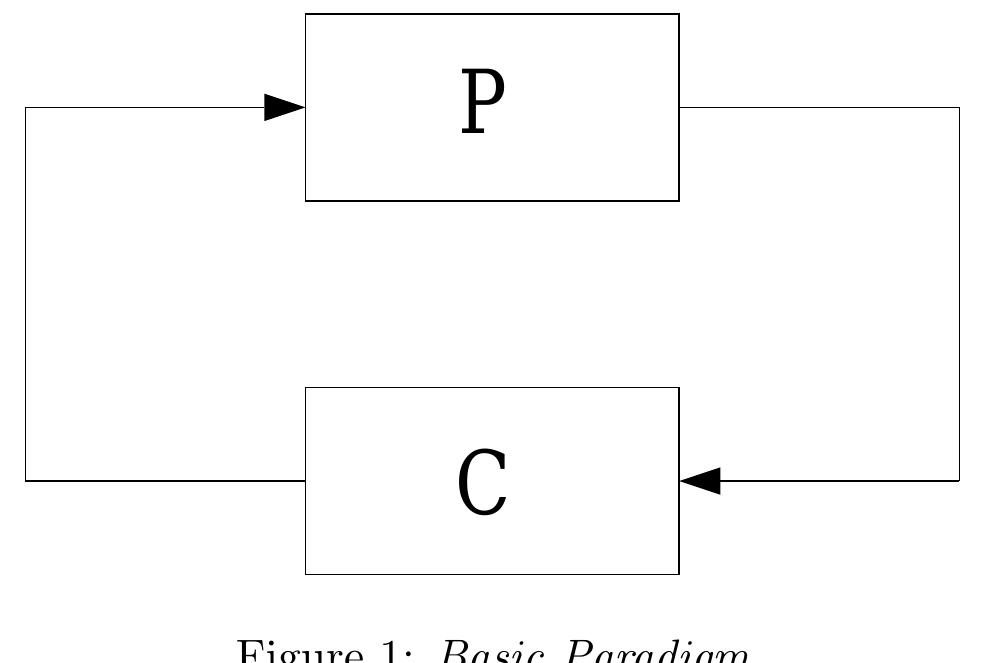Neural nets as systems models and controllers
1992
Abstract
Repr. from Proc. Seventh Yale Workshop on Adaptive and Learning Systems, pp. 73-79, May 1992. This paper briefly surveys some recent results relevant to the suitability of "neural nets" as models for dynamical systems as well as controllers for nonlinear plants. In particular, it touches upon questions of approximation, identifiability, construction of feedback laws, classification and interpolation, and computational capabilities of nets. No discussion is included of "learning" algorithms, concentrating instead on representational issues.
FAQs
AI
What explains the role of neural nets in modeling dynamic systems?
The research shows that neural nets can approximate a wide class of nonlinear systems, demonstrating universal identification capabilities for various input-output configurations. For instance, recurrent nets are capable of simulating control systems accurately across compact subsets of their state space.
How do neural nets compare to traditional controllers in practical applications?
The findings suggest that neural nets can handle more complex control tasks, such as gain scheduling, with improved performance. Specifically, using dynamic feedback and piecewise linear regulation yields better adaptability in systems like reconfigurable robotic manipulators.
When are two hidden layers necessary in neural networks for inverse problems?
The paper establishes that two hidden layers are sufficient to solve general inverse problems involving continuous functions. One hidden layer may not suffice due to the limitations in approximating characteristic functions of bounded polytopes.
What defines the universality of activation functions in neural networks?
An activation function is considered universal if it can approximate every continuous function on compact intervals. Specifically, functions that are continuous and nonconstant, such as sigmoid functions, display this universality property, allowing for comprehensive function approximation.
What methodological innovations improve neural network performance in control theory?
The study emphasizes using recurrent nets with targeted architectures that integrate nonlinearity, which enhances their ability to function as universal models. Enhanced feedback mechanisms through dynamic systems allow neural nets to maintain stability and control in complex environments.
References (13)
- Albertini, F., and E.D. Sontag, "For neural networks, function determines form," submitted.
- Cybenko, G., "Approximation by superpositions of a sigmoidal function," Math. Control, Signals, and Sys- tems 2(1989): 303-314.
- Hornik, K., "Approximation capabilities of multilayer feedforward networks," Neural Networks 4(1991): 251- 257.
- Maass, W., G. Schnitger, and E.D. Sontag, "On the computational power of sigmoid versus boolean thresh- old circuits," Proc. of the 32nd Annual Symp. on Foun- dations of Computer Science, 1991: 767-776.
- Matthews, M., "On the uniform approximation of non- linear discrete-time fading-memory systems using neu- ral network models," Ph.D. Thesis, E.T.H. Zurich, Diss. ETH No. 9635, 1992.
- Polycarpou, M.M., and P.A. Ioannou, "Identification and control of nonlinear systems using neural network models: Design and stability analysis," Report 91-09-01, Sept. 1991, Dept. of EE/Systems, USC, Los Angeles.
- Romanik, K., "Approximate testing and learnability," in Proc. Fifth ACM Workshop on Computational Learn- ing Theory, Pittsburgh, July 1992.
- Siegelmann, H.T., and E.D. Sontag, "On the computa- tional power of neural nets," in Proc. Fifth ACM Work- shop on Computational Learning Theory, Pittsburgh, July 1992; see also SYCON Report 91-11, Rutgers Cen- ter for Systems and Control, November 1991.
- Siegelmann, H.T., and E.D. Sontag, "Analog compu- tation, neural networks, and circuits," submitted.
- Sontag, E.D., "Nonlinear regulation: The piecewise linear approach," IEEE Trans. Autom. Control AC- 26(1981): 346-358.
- Sontag, E.D., "Feedforward nets for interpolation and classification," J. Comp. Syst. Sci., to appear, 1992.
- Sontag, E.D., "Feedback Stabilization Using Two- Hidden-Layer Nets," in Proc. Amer. Automatic Control Conference, Boston, June 1991, pp. 815-820. To appear in IEEE Trans. Neural Networks.
- Sontag, E.D., Mathematical Control Theory: Deter- ministic Finite Dimensional Systems, Springer, New York, 1990.
 Eduardo D. Sontag
Eduardo D. Sontag




